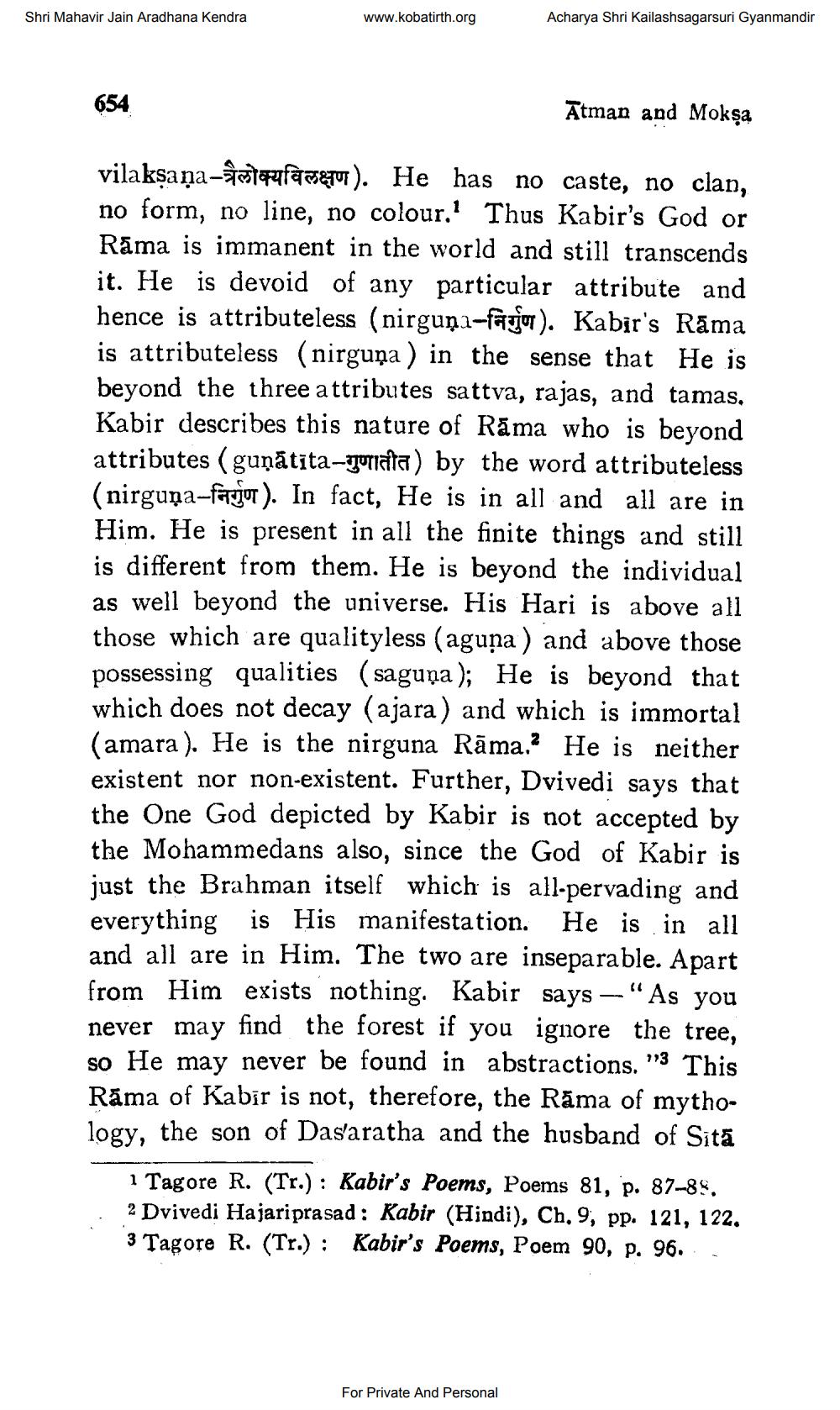________________
Shri Mahavir Jain Aradhana Kendra
www.kobatirth.org
Acharya Shri Kailashsagarsuri Gyanmandir
654
Atman and Moksa
vilaksaņa-stafaye). He has no caste, no clan, no form, no line, no colour.' Thus Kabir's God or Rāma is immanent in the world and still transcends it. He is devoid of any particular attribute and hence is attributeless (nirguņa-fajo). Kabir's Rāma is attributeless (nirguņa ) in the sense that He is beyond the three attributes sattva, rajas, and tamas. Kabir describes this nature of Rāma who is beyond attributes (guņátīta-mata) by the word attributeless (nirguņa-fajor). In fact, He is in all and all are in Him. He is present in all the finite things and still is different from them. He is beyond the individual as well beyond the universe. His Hari is above all those which are qualityless (aguna) and above those possessing qualities (saguņa); He is beyond that which does not decay (ajara) and which is immortal (amara). He is the nirguna Rāma. He is neither existent nor non-existent. Further, Dvivedi says that the One God depicted by Kabir is not accepted by the Mohammedans also, since the God of Kabir is just the Brahman itself which is all-pervading and everything is His manifestation. He is in all and all are in Him. The two are inseparable. Apart from Him exists nothing. Kabir says "As you never may find the forest if you ignore the tree, so He may never be found in abstractions. "3 This Rāma of Kabir is not, therefore, the Rāma of mythology, the son of Dasaratha and the husband of Sita
1 Tagore R. (Tr.): Kabir's Poems, Poems 81, p. 87–88. 2 Dvivedi Hajariprasad: Kabir (Hindi), Ch. 9, pp. 121, 122. 3 Tagore R. (Tr.): Kabir's Poems, Poem 90, p. 96.
For Private And Personal




